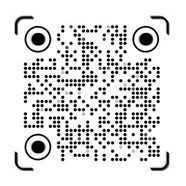Unpacking the Trailer Ball: Your Go-To Guide for Towing
Release Time:
Jul 12,2025
Understanding the Trailer Ball
Ever found yourself scratching your head over the nuances of towing? Trailer balls are the unsung heroes of the towing world, yet many folks overlook their importance. So, let’s dive into what a trailer ball is, why it’s crucial, and how to choose the right one for your vehicle.
What Exactly is a Trailer Ball?
In the simplest terms, a trailer ball is a spherical metal attachment mounted on a hitch. It serves as the connection point between your vehicle and the trailer you're towing. Think of it as the handshake that secures the two together! 🖐️ But not all trailer balls are created equal; they come in different sizes and weight ratings, which we’ll get into shortly.
Types of Trailer Balls
Now, let’s break it down, shall we? Trailer balls typically come in three sizes: 1-7/8 inches, 2 inches, and 2-5/16 inches. Each size corresponds to different weight capacities:
- 1-7/8 inches: Generally used for lighter trailers, often under 2,000 pounds.
- 2 inches: The most common size, ideal for medium-duty trailers, typically ranging from 2,000 to 6,000 pounds.
- 2-5/16 inches: These bad boys are for heavy-duty trailers, capable of towing loads over 6,000 pounds.
Choosing the right size is crucial; using the wrong one can lead to accidents! 😱
How to Install a Trailer Ball
Installing a trailer ball isn’t rocket science, but it does require some attention to detail. Here’s a quick rundown:
- Gather Your Tools: You’ll need a wrench, a torque wrench, and maybe some grease.
- Attach the Ball: Place the ball through the hitch receiver and secure it with the provided nut. Make sure it’s tight!
- Torque it Right: Use a torque wrench to tighten the nut to the manufacturer’s specifications. Too loose, and it could come off; too tight, and you could damage the threads!
And voilà! You’re ready to hit the road. But wait, don’t forget to double-check that your trailer is properly connected. Safety first, folks! 🚦
Safety Tips for Using Trailer Balls
Okay, so you’ve got your trailer ball installed and ready to roll. But before you take off, keep these safety tips in mind:
- Check Weight Ratings: Always ensure that your trailer ball can handle the weight of your trailer. Better safe than sorry!
- Inspect Regularly: Give your trailer ball and hitch a thorough inspection before every use. Look for signs of wear or rust.
- Secure the Load: Make sure your load is balanced and properly secured. A wobbly load can lead to trouble!
Remember, towing isn’t just about getting from point A to point B; it’s about doing it safely!
In Conclusion
So there you have it—a comprehensive guide to trailer balls! Whether you’re a seasoned pro or just getting started, understanding the ins and outs of trailer balls will make your towing experience smoother and safer. Next time you hit the road, you’ll know exactly what’s holding your trailer in place. Happy towing! 🎉
Key words:
Related Blog




